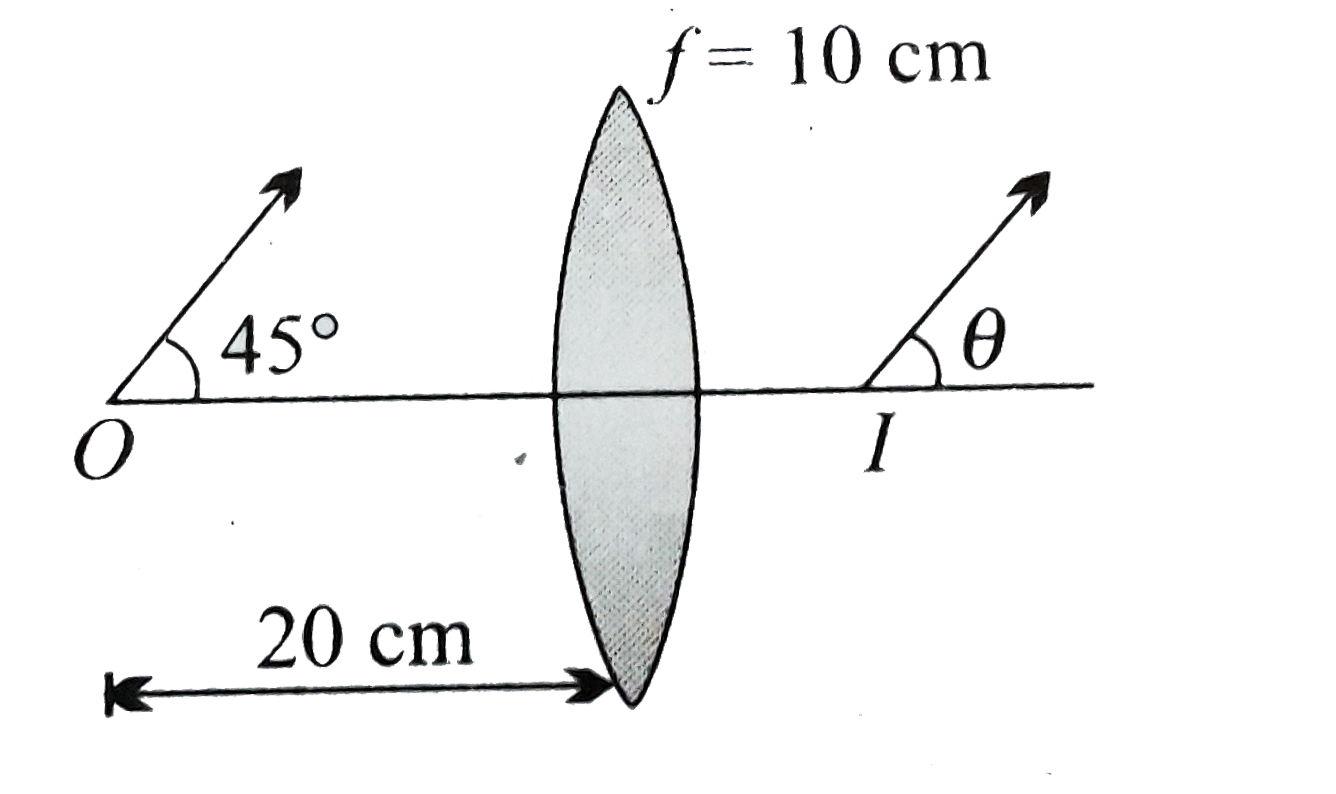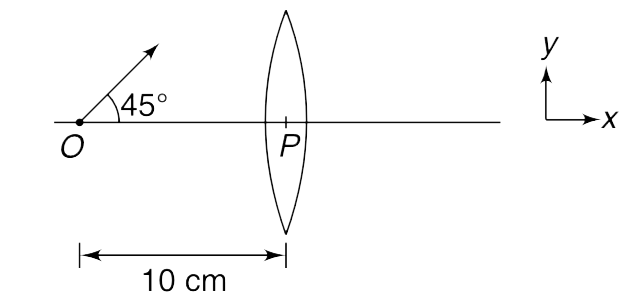An object starts moving at an angle of 45∘ with the principal axis as shown in fig. in front of a biconvex lens of focal length + 10 cm. If A denotes the angle at which image starts to move with principal axis, then

θ=3π4
θ=π2
θ=π4
θ=−π4
The correct Answer is:D
Topper's Solved these Questions
- GEOMETRICAL OPTICSBOOK - AAKASH SERIESCHAPTER - GEOMETRICAL OPTICSEXERCISE - LECTURE SHEET (EXERCISE-III (LEVEL-II (ADVANCED) STRAIGHT OBJECTIVE TYPE QUESTIONS))
12 Videos
- GEOMETRICAL OPTICSBOOK - AAKASH SERIESCHAPTER - GEOMETRICAL OPTICSEXERCISE - LECTURE SHEET (EXERCISE-III (LEVEL-II (ADVANCED) MORE THAN ONE CORRECT ANSWER TYPE QUESTIONS))
1 Videos
- GEOMETRICAL OPTICSBOOK - AAKASH SERIESCHAPTER - GEOMETRICAL OPTICSEXERCISE - LECTURE SHEET (EXERCISE-II (LEVEL-II (ADVANCED) INTEGER TYPE QUESTIONS))
2 Videos
- ELEMENTS OF VECTORSBOOK - AAKASH SERIESCHAPTER - ELEMENTS OF VECTORSEXERCISE - QUESTIONS FOR DESCRIPTIVE ANSWERS
9 Videos
- LAWS OF MOTIONBOOK - AAKASH SERIESCHAPTER - LAWS OF MOTIONEXERCISE - PRACTICE EXERCISE
98 Videos
Similar Questions
An object starts moviing at an angle of 45∘ with the principal axis as shown in figure. In front of a biconvex lens of focal length +10cm . If θ denotes the angle at which image starts to move with principal axis, then

View SolutionA point object (O) lies at a distance of 20 cm on the principal axis of a convex lens of focal length f=10cm. The object begins to move in a direction making an angle of 45° with the principal axis. At what angle with the principal axis does the image beings to move?

View Solution
Knowledge Check
An object starts moviing at an angle of 45∘ with the principal axis as shown in figure. In front of a biconvex lens of focal length +10cm . If θ denotes the angle at which image starts to move with principal axis, then
 Aθ=3π4Bθ=π2Cθ=π4Dθ=−π4
Aθ=3π4Bθ=π2Cθ=π4Dθ=−π4A thin linear object of size 1mm is kept along the principal axis of a convex lens of focal length 10cm. The object is at 15cm from the lens. The length of the image is:
A1mmB4mmC2mmD8mmPoint object O is placed on the principal axis of a convex lens of focal length 20cm at a distance of 40 cm to the left of it. The diameter of the lens is 10cm to the right of the lens at a distance h below the principal axis, then the maximum value of h to see the image will be
A0B5cmC2.5cmD10cm
A light ray travelling parallel to the principal axis of a convex lens of focal length 12 cm strikes the lens at a height of 5 mm from the principal axis. What is the angle of deviation produced?
View SolutionAn extended object of size 2mm is placed on the principal axis of a converging lens of focal length 10cm. It is found that when the object is placed perpendicular to the principal axis the image formed is 4mm in size. The size of image when it is placed along the principal axis is ____________ mm.
View SolutionAn extended object of size 2mm is placed on the principal axis of a converging lens of focal length 10cm. It is found that when the object is placed perpendicular to the principal axis the image formed is 4mm in size. The size of image when it is placed along the principal axis is ____________ mm.
View SolutionWhere should an object be kept on the principal axis of a convex lens of focal length 20 cm, in order to get an image, which is double the size of the object?
View SolutionA thin linear object of size 1mm is kept along the principal axis of a convex lens of focal length 10cm. The object is at 15cm from the lens. The length of the image is:
View Solution
